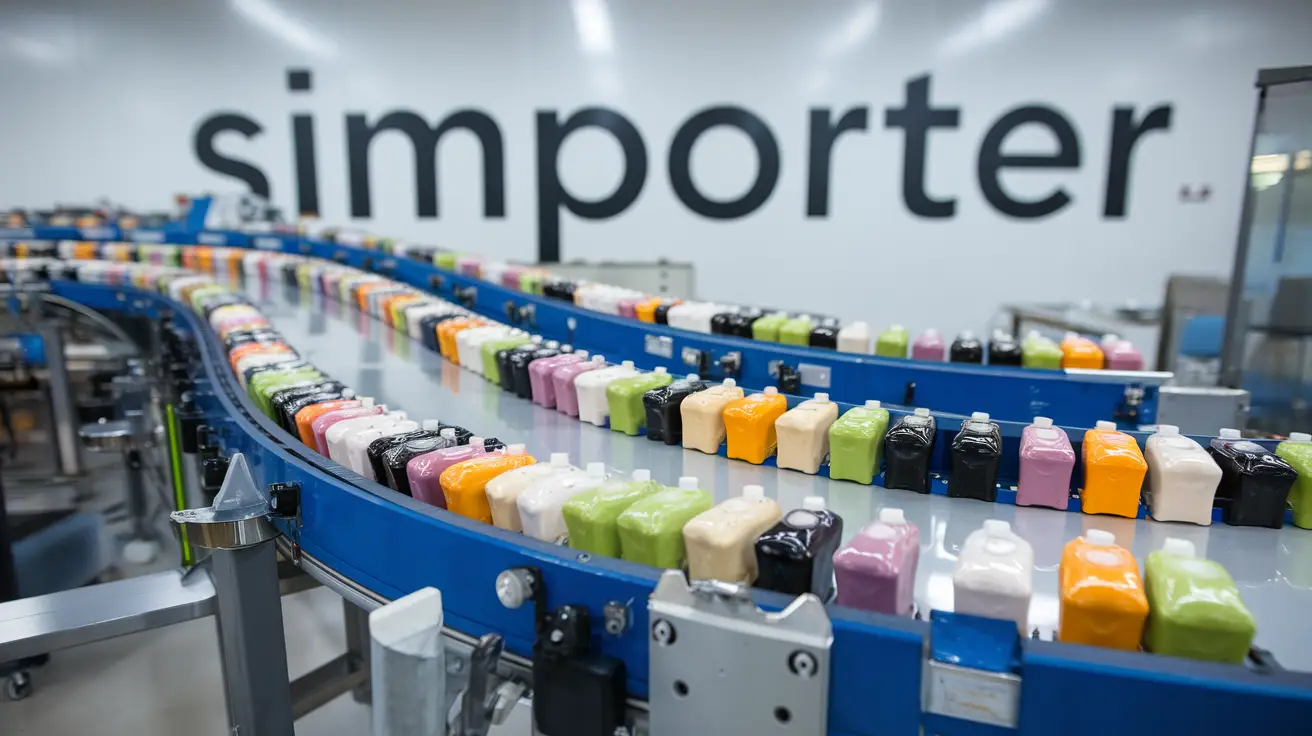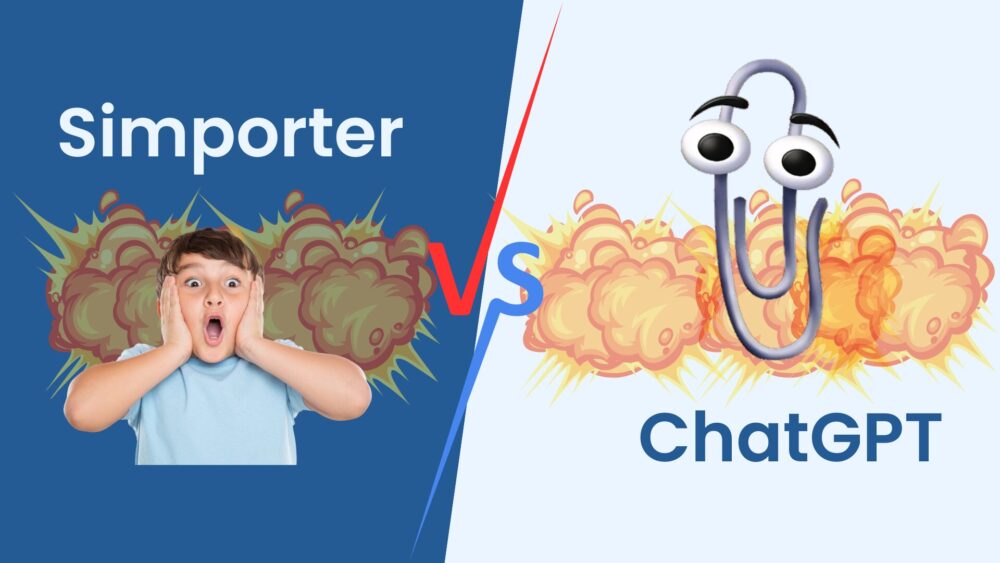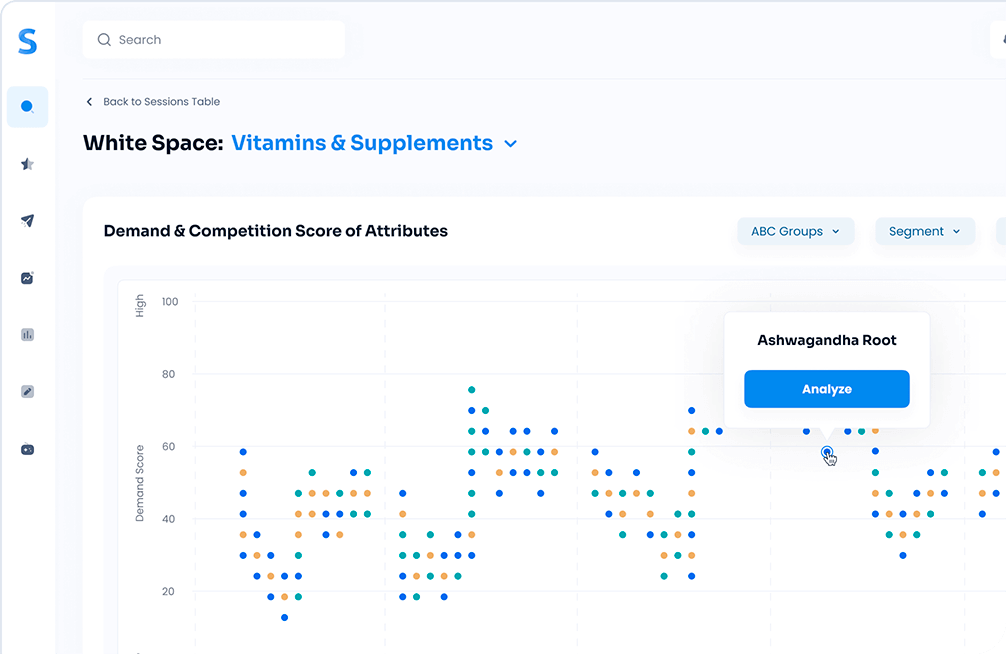What is Concept Development?
Concept development refers to the process of creating and refining ideas that solve specific problems. Unlike basic brainstorming, concept development aims to narrow a broad set of ideas into a single, well-defined solution. This process helps organizations, especially those in fast-moving consumer goods, focus on products that meet their audience’s needs.
Concept development involves more than listing ideas. It requires close analysis, feedback, and a structured approach that moves concepts forward. Mastering this process means building products that work in real-world settings and gain consumer trust. When done right, concept development delivers products that align with market demands while giving companies a strategic edge.
Why Concept Development Matters
The goal of concept development is to move beyond ideas and shape them into market-ready products. Companies must respond quickly to shifting trends while creating products that meet rigorous quality standards. By following a structured approach, enterprises can develop solutions that resonate with consumers and avoid costly missteps.
Effective concept development brings clarity and direction, which reduces development time and improves product quality. It guides teams through each stage, from idea creation to product testing, ensuring every step aligns with consumer needs. Many of today’s best-selling products went through a robust concept development process before entering the market. Understanding and using these methods can help deliver products that are relevant and meet demand.
The Steps in Concept Development
Concept development often follows a series of well-defined stages. Each stage serves as a checkpoint, helping teams refine their ideas and ensuring the product remains on track.
Identifying Consumer Needs
The first step in concept development involves identifying what the consumer wants. This stage sets the foundation for everything that follows, as it determines the direction of the product. Teams must research their audience to understand their preferences and pain points. By focusing on specific needs, concept developers avoid vague ideas that lack real-world relevance.
Research includes studying consumer habits, reviewing product feedback, and analyzing market trends. This might mean looking at new shopping behaviors, seasonal trends, or preferences for sustainable packaging. Effective concept development begins with a clear picture of the customer, helping guide teams toward ideas that address real needs.
Defining the Problem Clearly
Once teams understand what the consumer wants, they can define the problem the product will solve. This stage narrows the focus from broad ideas to a single challenge. Instead of pursuing a general solution, concept developers work to address specific issues faced by their audience. This focus improves efficiency and prevents teams from drifting away from the initial goal.
By defining the problem, teams clarify what they want to achieve. For example, a brand might decide to focus on creating an environmentally friendly product that addresses consumer concerns about sustainability. This stage sets a clear objective and gives concept developers a goal that can guide the entire process.
Generating Ideas
With a clear objective, teams can begin generating ideas. This stage involves brainstorming sessions where team members share their concepts for addressing the defined problem. While the goal is to produce as many ideas as possible, quality matters more than quantity. The best ideas are those that directly solve the problem and meet consumer needs.
During brainstorming sessions, teams should welcome diverse perspectives. Each idea should relate back to the initial problem, ensuring that the solution remains focused. This approach prevents teams from wandering into unrelated ideas that don’t add value to the concept.
This stage may involve consulting with design, marketing, and research teams to capture ideas that reflect multiple viewpoints. By collecting input from different areas, teams can generate a pool of ideas that account for various aspects of the product.
Screening and Refining Ideas
After gathering a broad range of ideas, teams begin the process of screening and refining. This stage reduces the list of ideas by evaluating each one’s potential. Screening involves comparing ideas to the problem definition and identifying which ones align best with the original goal. Ideas that lack feasibility or fail to address the problem are set aside.
In concept development, the refinement stage is essential. Teams take the best ideas and begin shaping them into more detailed solutions. This process often involves preliminary testing and feedback sessions with stakeholders. Refinement moves concepts closer to a finalized version, preparing them for the next stage.
Screening and refining ensure that only viable ideas remain in the concept development pipeline. By removing impractical ideas early, teams save time and resources, making the process more efficient. Refinement also encourages collaboration, as team members discuss and improve ideas together.
Prototyping and Testing
Once teams refine their ideas, they can begin the prototyping phase. Prototyping creates a model or draft of the concept, allowing teams to test it in real-world conditions. Prototyping can vary in complexity, from simple sketches to more detailed models. The key is to produce a version of the product that can be tested for functionality and appeal.
Testing follows the prototype stage, providing valuable feedback on the product. Through testing, teams learn how the concept performs and whether it meets consumer needs. This stage often reveals areas that need improvement, helping teams refine the product further.
Testing can take many forms, such as focus groups, in-store trials, or online feedback. Testing provides a critical opportunity to understand how consumers react to a new product. Insights from testing help teams make adjustments that improve the product’s chances of success in the market.
Launching the Final Product
After completing the testing phase, teams prepare for product launch. This stage involves final adjustments based on feedback received during testing. The goal is to ensure the product meets all requirements and aligns with the original problem definition. Successful product launches rely on a clear strategy that covers marketing, distribution, and pricing.
A product launch represents the culmination of months or even years of work. Teams must coordinate efforts across various departments to make sure everything runs smoothly. From creating packaging that appeals to consumers to planning effective distribution channels, each part of the launch contributes to the product’s success.
Common Pitfalls in Concept Development
Concept development can be complex, and teams may face several challenges. Understanding these pitfalls helps prevent common errors that slow down the process or produce weak products.
One common challenge is the lack of focus. When teams pursue too many ideas, they lose sight of the original goal. This problem often arises during the brainstorming phase, where teams might stray from the problem definition. Staying focused ensures that concept development remains efficient and relevant.
Another challenge involves insufficient consumer research. Without a clear understanding of the target audience, teams risk developing products that lack market relevance. This problem can lead to wasted resources, as the product fails to gain traction with consumers.
Inadequate testing is another frequent pitfall. Testing provides critical feedback that improves product quality. When teams skip this stage or conduct limited testing, they lose valuable insights that could strengthen the concept. Comprehensive testing is essential to ensure products meet high standards.
Best Practices for Effective Concept Development
To improve concept development, teams can follow several best practices. One key practice is maintaining a clear focus throughout the process. By defining the problem early and sticking to it, teams create a structured path that moves the concept forward. Each stage builds on the previous one, keeping the product aligned with consumer needs.
Another best practice is to involve diverse perspectives. Gathering input from multiple departments brings new ideas and insights. Teams should consider feedback from marketing, design, and consumer research to ensure a well-rounded concept.
Using feedback effectively is also critical. Feedback gathered during testing helps refine the concept, making it stronger and more consumer-friendly. Regular feedback sessions keep teams updated on how the concept performs, allowing for continuous improvement.
Finally, focusing on quality over quantity ensures that the best ideas progress through the development stages. Rather than pursuing every idea, teams should evaluate each one carefully. This approach reduces waste and helps create products that meet high standards.
Addressing Challenges in Concept Development
Keeping the Consumer in Focus
Throughout concept development, it’s crucial to keep the consumer’s needs and preferences at the center. This focus not only ensures relevance but also reduces risks by aligning with what consumers actually want. Losing sight of consumer needs can lead to products that struggle to resonate. Consumer-focused development begins with an understanding of the end user’s lifestyle, preferences, and pain points.
One effective way to maintain this focus is through continuous feedback loops. By integrating regular feedback sessions with target consumers, concept developers gain insights that guide refinements. Teams can track consumer preferences at every stage, from initial ideation to final testing. Tools that connect directly with consumers provide a foundation of reliable data, ensuring products meet expectations.
Budget Constraints and Resource Allocation
Managing budgets and resources can be challenging in concept development, especially for companies balancing multiple product initiatives. Often, budget constraints force teams to choose between several promising concepts, making resource allocation vital to achieving the best possible outcomes.
The most effective teams begin by assessing each concept’s potential. They consider factors like market size, production cost, and consumer demand. By identifying high-value concepts early, companies avoid spreading resources thin. You can prioritize product ideas based on predictive demand analysis. This ensures investment goes toward concepts that promise both consumer appeal and profitable returns.
Encouraging Collaboration and Cross-Departmental Input
Concept development thrives on diverse input. Cross-departmental collaboration becomes essential where products need to perform well in terms of design, packaging, and distribution. Involving design, marketing, and R&D teams early in the process generates broader perspectives and helps spot challenges that one department alone might overlook.
Collaboration tools facilitate these interactions, providing spaces for shared notes, comments, and updates. Effective collaboration leads to products that excel across departments, from effective branding to practical usability. Try centralizing consumer insights and competitive analysis in one platform, giving all teams access to the latest consumer data. This shared resource aligns departments and keeps everyone focused on the product’s goals.
AI Concept Creation
Artificial intelligence has become a transformative force in concept development, offering capabilities to innovate faster and more effectively than ever. By automating key stages in the concept development process, AI allows teams to shift their focus from repetitive tasks to strategic decision-making. With advancements in generative AI, companies can now produce fully realized product concepts, including visualized packaging designs and written descriptions. This technology has the power to reshape the way product ideas are generated, refined, and ultimately brought to market.
AI-Powered Idea Generation
In the early stages of concept development, ideation often involves countless brainstorming sessions, where teams sift through a pool of ideas to find those with the most potential. AI can streamline this phase by analyzing vast amounts of data—such as consumer feedback, market trends, and competitor products—to identify concepts with high relevance. Through AI-driven algorithms, companies gain insights into what features, designs, and messaging resonate with target audiences. This approach reduces the time spent on initial research and helps focus on high-potential ideas.
Generative AI, in particular, goes beyond simple analysis. Tools like Simporter use generative models to create fully developed product ideas, presenting teams with realistic mockups and concept descriptions that align with market needs. This means the concept development process begins with a strong foundation, as AI generates ideas grounded in actual consumer demand. By leveraging AI in ideation, teams can explore a wider range of options and select ideas with a clear path to success.
Prototyping with AI-Generated Design Concepts
One of the unique benefits of generative AI is its ability to produce visual representations of products quickly and accurately. In traditional concept development, designing and refining product packaging can be time-intensive and costly. With AI, teams can generate multiple design concepts and iterate on them based on real-time feedback. This allows companies to visualize products earlier in the process, ensuring that design aligns with brand values and consumer preferences.
Generative AI models can create customized packaging designs that meet specific criteria, like sustainability or aesthetics. These models analyze existing data to understand what consumers find visually appealing, then incorporate those elements into design options. By using AI to generate visual prototypes, teams can save time, reduce design costs, and ensure that each product concept is both practical and attractive. AI-driven design is particularly valuable, as it enables teams to test and refine packaging ideas quickly, ultimately delivering a product that resonates with consumers.
Refining Concept Descriptions with AI
Creating compelling, descriptive copy is essential to successful concept development. Product descriptions must convey key benefits while appealing to the target audience. Traditionally, teams would rely on copywriters and marketing specialists to develop these descriptions, a process that can involve multiple revisions. With AI, teams can generate high-quality concept descriptions that align with brand voice and meet consumer expectations.
Generative AI produces descriptions based on detailed prompts, ensuring that each piece of copy highlights the product’s unique features and value proposition. This technology saves time and enables more flexibility, as teams can experiment with different wording and tones. With AI handling the initial draft, marketing and design teams have a reliable starting point for refining descriptions and positioning statements. This approach not only enhances efficiency but also ensures consistency in messaging across product lines.
Simporter’s AI-driven concept creation is a prime example of how this technology supports product teams, delivering pre-designed packs and professionally written descriptions for each concept. By automating these steps, you can focus on higher-level strategic decisions, streamlining the journey from concept to final product.
Refining Concept Descriptions with AI
Consumer-Centric Testing and Feedback Analysis
Once a product concept reaches the testing phase, AI plays a pivotal role in collecting and analyzing consumer feedback. Rather than relying on traditional surveys alone, AI can monitor online discussions, social media trends, and customer reviews, giving companies a more holistic view of consumer sentiment. By analyzing this data, AI helps companies understand which aspects of a concept resonate most and identify areas for improvement.
Sentiment analysis, an AI-driven technique, allows you to quantify and interpret consumer responses. This technology captures nuances in feedback, enabling teams to make adjustments that align with consumer expectations. For example, if feedback reveals a strong preference for eco-friendly packaging, teams can refine their concept to emphasize sustainability. By embedding AI into the feedback loop, companies ensure that their products stay aligned with evolving consumer demands, ultimately increasing the likelihood of success in the market.
Predictive Analytics for Future-Focused Concepts
AI not only enhances current concept development but also equips companies with insights that drive future innovation. Predictive analytics, powered by machine learning, examines historical data to identify patterns and trends that can inform upcoming projects. This forward-looking approach helps companies anticipate changes in consumer behavior, allowing them to stay ahead of competitors.
For example, if AI models identify a growing interest in health-focused products, teams can incorporate these insights into their concept development strategy. Predictive analytics ensure that concept development remains proactive, helping companies innovate within trending areas rather than reacting after the fact. AI’s predictive capabilities give teams a strategic advantage, positioning them to develop products that meet consumer demand before it peaks.
The Impact of AI
The integration of AI into concept development offers companies a competitive edge, accelerating the journey from idea to market-ready product. AI-driven tools empower teams to create fully developed product concepts complete with designs and descriptions. This capability not only saves time but also enhances accuracy, delivering concepts that align with market needs and consumer preferences.
AI provides unmatched efficiency in generating, testing, and refining product ideas, reducing resource strain and allowing teams to focus on strategic goals. As AI continues to evolve, its role in concept development will become increasingly valuable, giving companies a powerful tool for creating consumer-driven products that succeed in competitive markets.
Testing and Validating the Concept
Early Prototyping for Concept Validation
Creating prototypes early in concept development can reveal issues before they become costly. Prototypes serve as a tangible test, allowing teams to see how the concept works in real-world conditions. Testing prototypes helps validate key elements like design, functionality, and usability. Even simple prototypes give teams insights into how consumers might react to the final product, guiding necessary adjustments.
Early validation reduces the likelihood of last-minute changes, which can increase production costs and extend timelines. When consumer preferences shift quickly, early prototyping ensures teams stay on course with the product. If initial prototypes reveal gaps or concerns, teams have the flexibility to revise designs without overhauling the entire concept.
Engaging with Target Consumers
Gathering feedback from the target audience gives companies a sense of how their product might perform. Testing concepts with real users—whether through surveys, focus groups, or small-scale launches—provides valuable insights. These early tests help pinpoint what consumers like, dislike, or want to see improved.
Testing with consumers also reveals how the product might perform against competitors. Consumer testing offers a reality check, showing whether the product can achieve its intended purpose and compete effectively. Simporter’s platform includes robust consumer analysis, helping teams understand how potential users view their product and where it stands in the competitive landscape.
Making Data-Driven Adjustments
Testing often highlights areas needing refinement, from packaging to feature tweaks. Data-driven adjustments make each iteration stronger, guiding concept developers in creating a market-ready product. By examining feedback data, teams can identify patterns, address weaknesses, and make improvements that align with consumer expectations.
Using a data-backed approach reduces uncertainty in concept development. Teams gain confidence in their product decisions, knowing each adjustment is based on real-world data. This minimizes trial-and-error methods and increases the product’s likelihood of success. With Simporter’s analytics, concept developers can track consumer feedback in real-time, providing immediate insights that refine the product.
Preparing for Product Launch
Finalizing the Concept
As the product nears launch, the development team finalizes all elements based on feedback gathered through testing. This finalization stage ensures that all adjustments align with the initial goals and meet consumer expectations. Every detail, from packaging to pricing, plays a role in the product’s market success. This stage also involves confirming that the product fulfills the problem it set out to solve.
Launch preparation includes coordinating with marketing, distribution, and logistics teams to ensure a seamless market entry. For successful launches, all departments must work together, ensuring the product not only reaches the shelves but also meets demand. A unified approach to launch preparation reduces the risk of overlooked details and sets up the product for strong initial sales.
Creating a Go-to-Market Strategy
An effective go-to-market strategy addresses every factor influencing the product’s introduction to consumers. Marketing strategies, target demographics, distribution channels, and promotional timing all play a part. The goal is to create a strong market entry that generates interest, drives sales, and builds brand loyalty.
Timing matters. Launching during peak buying seasons or aligned with industry trends can increase visibility. Equally important is the distribution strategy, which should account for both online and offline channels. Simporter’s platform provides demand forecasting, which can guide the timing and scope of the go-to-market strategy, helping teams make informed choices on launch timing and placement.
Using Consumer Data for Targeted Marketing
Understanding your audience enables targeted marketing efforts. Data-driven marketing focuses on delivering messages that resonate with specific consumer groups, increasing the likelihood of engagement. With insights from concept testing and consumer analysis, companies can create ads that speak directly to their target audience’s needs and preferences.
Data-backed marketing messages have higher conversion rates, as they address known consumer preferences. For instance, if testing reveals a strong interest in sustainability, the marketing strategy can highlight eco-friendly features. Simporter’s data platform enables teams to segment their audience, aligning marketing efforts with real consumer data for more effective results.
Best Practices for Long-Term Success in Concept Development
Establishing a Feedback-Driven Development Cycle
Concept development doesn’t end with the launch. Successful products require ongoing improvements to remain competitive and relevant. Establishing a feedback-driven development cycle keeps products aligned with consumer needs. Post-launch, teams gather feedback to understand how the product performs in real-world settings and identify areas for improvement.
By reviewing consumer feedback regularly, companies can make timely adjustments, from packaging updates to feature enhancements. This iterative approach ensures long-term relevance and strengthens brand loyalty. Simporter offers tools to monitor post-launch consumer sentiment, enabling teams to stay updated on their product’s performance and respond to emerging trends.
Innovating Within Consumer Trends
Staying ahead means anticipating trends and evolving with consumer expectations. Tracking trends allows companies to develop products that fit into shifting consumer lifestyles. When teams stay current on trends, they gain a competitive edge, launching products that meet timely consumer needs.
From health-focused products to eco-friendly packaging, trend-focused concept development leads to offerings that resonate with today’s consumers. Simporter’s trend analysis features provide companies with up-to-date information on consumer shifts, helping them innovate within relevant areas and maximize product success.
Leveraging Predictive Analytics for Future Products
Predictive analytics offer insights into potential future trends and demands. By examining historical data, companies can anticipate what consumers will look for next, allowing them to start concept development early. Predictive tools guide companies in identifying high-potential concepts, positioning them to respond faster than competitors.
Particularly in competitive categories, predictive analytics provide a roadmap for future success. Instead of reacting to trends after they’ve peaked, companies can start development in advance, giving them a first-mover advantage. With Simporter’s predictive analytics, teams can strategize for long-term innovation, making data-informed decisions that keep them at the forefront of the industry.
Conclusion
Concept development serves as the foundation for companies looking to create products that connect with consumers. It begins with understanding the consumer and extends through every stage, from initial ideation to final launch. By following a structured, feedback-driven approach, companies reduce risks and produce market-ready products. For executives, mastering concept development is key to launching products that perform well and meet consumer expectations.
For teams interested in refining their concept development process, a data-driven approach offers unmatched advantages. Tools like Simporter provide access to real-time consumer insights, demand forecasts, and trend analysis, giving companies a comprehensive understanding of their market.
Ready to elevate your product development? Request a Simporter demo to explore how data-driven insights can power your next successful product launch.









